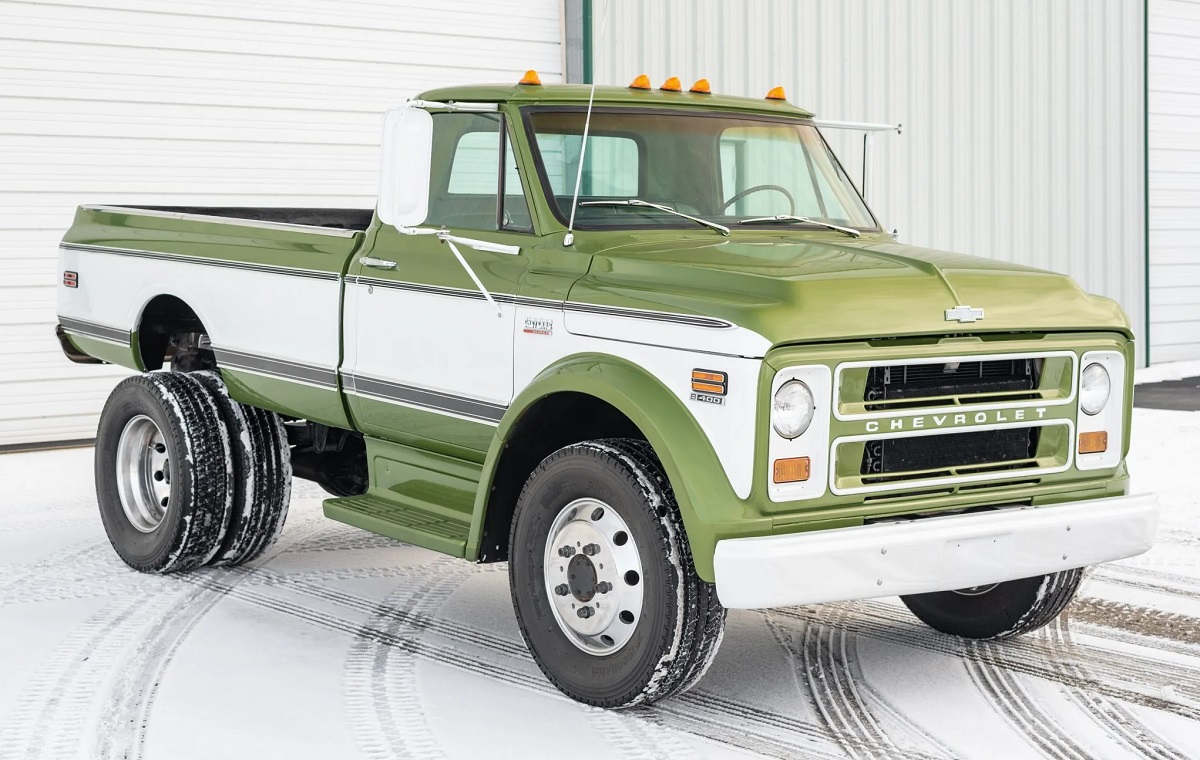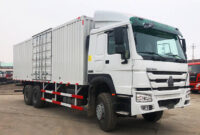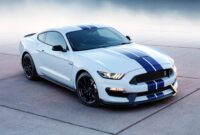1971 Chevy Trucks For Sale: Your Comprehensive Guide to Owning a Classic American Icon pickup.truckstrend.com
The year 1971 stands as a landmark in the history of Chevrolet trucks, marking the penultimate year of the beloved "Action Line" C/K series, a generation that redefined utility and style in American pickups. For enthusiasts and collectors, a 1971 Chevy truck isn’t just a vehicle; it’s a tangible piece of automotive history, a testament to American engineering, and a canvas for personal expression. From their distinctive grille to their robust mechanicals, these trucks embody an era of straightforward functionality paired with an undeniable aesthetic charm.
In an increasingly digitized and complex world, the simplicity and rugged appeal of a 1971 Chevy truck offer a refreshing escape. They represent a time when vehicles were built to last, designed with character, and easily maintained by their owners. This comprehensive guide aims to arm prospective buyers with the knowledge and insights needed to navigate the market for 1971 Chevy trucks, ensuring a rewarding acquisition experience.
1971 Chevy Trucks For Sale: Your Comprehensive Guide to Owning a Classic American Icon
Why Buy a 1971 Chevy Truck? The Allure of Vintage Iron
The enduring popularity of the 1971 Chevy truck stems from a confluence of factors that make it highly desirable in today’s classic vehicle market:
- Iconic Styling: The 1967-1972 C/K series, often referred to as the "Glamour Pickups" or "Action Line," boasts a timeless design. The 1971 model, in particular, introduced a new egg-crate grille design and revised interior trim, giving it a unique identity within its generation. Its clean lines, wide stance, and balanced proportions appeal to a broad audience.
- Robust Durability: These trucks were built with heavy-gauge steel and simple, reliable mechanical components. They were designed for hard work, and many examples have proven their longevity over five decades.
- Mechanical Simplicity & Parts Availability: Unlike modern vehicles laden with complex electronics, 1971 Chevy trucks feature relatively straightforward mechanical systems. This makes them easier to diagnose, repair, and maintain for the average enthusiast. Furthermore, due to their immense popularity, the aftermarket support for C/K series trucks is unparalleled, with virtually every part, from body panels to engine components, readily available new or reproduced.
- Customization Potential: The C/K platform is a favorite among customizers. Whether you envision a faithful, factory-correct restoration, a modern "restomod" with updated drivetrain and suspension, or a slammed hot rod, the possibilities are virtually limitless.
- Investment Potential: Well-maintained, original, or professionally restored 1971 Chevy trucks have shown a steady appreciation in value, making them not just a hobby but potentially a sound investment.
- The Driving Experience: Driving a 1971 Chevy truck is an experience. The raw, connected feel to the road, the rumble of a classic V8, and the commanding view from the cab offer a nostalgic journey back in time, distinct from any modern vehicle.

Understanding the 1971 Chevy Truck Lineup
To effectively search for a 1971 Chevy truck, it’s crucial to understand the various models and configurations offered:
- C-Series (2WD) / K-Series (4WD): The "C" designation indicates a two-wheel-drive truck, while "K" denotes a four-wheel-drive model. This is the primary differentiator for capability.
- Weight Classes:
- C10/K10: Half-ton (1/2 ton) models, the most common and popular for restoration and customization due to their lighter weight and more comfortable ride.
- C20/K20: Three-quarter-ton (3/4 ton) models, offering increased hauling capacity.
- C30/K30: One-ton (1 ton) models, designed for heavy-duty work.

- Body Styles:
- Fleetside: The most common and popular bed style, featuring smooth, straight sides.
- Stepside: Also known as "Fenderside," this bed features external fenders and a step behind the cab, offering a more classic, utilitarian look.
- Suburban: A station wagon body on a truck chassis, offering enclosed passenger and cargo space.
- Blazer (K5): Chevrolet’s answer to the Ford Bronco, a short-wheelbase, open-top utility vehicle based on the C/K platform, available exclusively in 4×4 for 1971.
- Engine Options:
- Inline-6: 250 cu in (4.1L) and 292 cu in (4.8L). Known for their reliability and torque.
- Small-Block V8: 307 cu in (5.0L) and 350 cu in (5.7L). The 350 V8 is arguably the most popular engine due to its balance of power, reliability, and vast aftermarket support.
- Big-Block V8: 400 cu in (6.6L) and 402 cu in (6.6L). The 402 was marketed as a "400" V8. These provided maximum power for heavy hauling.
- Transmission Options:
- Manual: 3-speed (column or floor shift) and 4-speed (floor shift).
- Automatic: Powerglide (2-speed, less common in 1971), TH350 (3-speed), and TH400 (3-speed, heavy-duty).
- Key 1971 Features: A significant upgrade for 1971 was the standardization of front disc brakes on all light-duty trucks (C10/K10/Suburban/Blazer), significantly improving stopping power and safety.

Where to Find 1971 Chevy Trucks For Sale
The market for classic trucks is vibrant, and 1971 Chevy trucks are no exception. Here are common avenues for finding them:
- Online Marketplaces:
- Dedicated Classic Car Sites: ClassicCars.com, Hemmings.com, AutoTrader Classics.
- Auction Sites: eBay Motors, Bring a Trailer (for higher-end examples).
- General Classifieds: Craigslist, Facebook Marketplace (can yield local, often less expensive project trucks).
- Specialty Classic Truck Dealers: Dealers specializing in vintage trucks often have a curated inventory of restored or well-preserved examples.
- Auctions: Major automotive auctions like Mecum, Barrett-Jackson, and Bonhams frequently feature classic trucks.
- Car Shows & Swap Meets: A great way to see trucks in person, talk to owners, and sometimes find vehicles not advertised elsewhere.
- Word-of-Mouth: Let friends, family, and local car club members know you’re looking.
The Buying Process: What to Look For and Essential Considerations
Purchasing a classic truck requires a different approach than buying a modern vehicle. Here’s a guide to ensure a wise investment:
1. Define Your Budget and Desired Condition:
- Project Truck: Requires extensive work (rust repair, mechanical overhaul, paint, interior). Lowest initial cost, highest potential restoration expense.
- Driver Quality: Runnable and drivable, but with cosmetic flaws, minor mechanical issues, or older restoration. Good for immediate enjoyment and gradual improvement.
- Good/Excellent Condition: Well-maintained, minimal rust, solid mechanics, presentable paint and interior. Ready to enjoy.
- Concours/Show Quality: Professionally restored to original or better-than-original condition. Commands the highest prices.
2. Key Inspection Points:
- Rust: The biggest enemy of these trucks. Common areas include:
- Cab corners (below the doors)
- Rocker panels (below the doors)
- Floor pans (under the carpet/mat)
- Inner and outer fenders
- Lower door skins
- Bed floor and bed sides
- Frame rails (check for cracks, bends, or severe rot)
- Frame Integrity: Inspect the entire frame for straightness, signs of accident damage, or significant rust.
- Engine & Drivetrain:
- Listen for unusual noises (knocks, clunks, squeals).
- Check for fluid leaks (oil, coolant, transmission fluid).
- Look at exhaust smoke color (blue for oil, white for coolant).
- Check fluid levels and appearance.
- Assess transmission shifting (smoothness, engagement).
- Brakes: Test pedal feel (firm, not spongy), stopping power, and if the truck pulls to one side. Remember, 1971 has front discs.
- Suspension & Steering: Check for excessive play in the steering wheel, worn ball joints, tie rods, and shock absorbers.
- Electrical System: Test all lights (headlights, tail lights, turn signals), gauges, wipers, heater fan, and horn.
- Interior: Inspect seat upholstery, dashboard (cracks are common), door panels, headliner, and functionality of all controls.
- Documentation: A clean title is essential. Service records, original owner’s manuals, or build sheets add significant value.
3. Test Drive:
- Drive the truck at various speeds.
- Test acceleration and braking.
- Listen for road noise, wind noise, and drivetrain sounds.
- Check for vibrations or pulling.
- Ensure all gears engage properly.
4. Valuation: Research comparable sales on auction sites or classic car listings. The price varies wildly based on model, condition, engine, transmission, and originality.
5. Professional Inspection: If you’re serious about a purchase, especially from a distance, consider hiring a pre-purchase inspector specializing in classic vehicles.
Restoring or Modifying Your 1971 Chevy Truck
Once you own a 1971 Chevy, the journey often continues with restoration or customization.
- Restoration: Decide between a "nut and bolt" frame-off restoration to factory specifications or a "driver quality" restoration focusing on aesthetics and reliability.
- Common Upgrades: Many owners opt for modern conveniences and performance improvements, such as:
- Power Steering & Power Brakes: Significantly improve drivability.
- Air Conditioning: Essential for comfort in many climates.
- Engine Swaps: Modern LS-series V8s offer excellent power and fuel efficiency.
- Transmission Upgrades: Overdrive automatics (like 700R4 or 4L60E) improve highway cruising.
- Suspension Upgrades: Lowering kits, coilover conversions, or air ride systems for improved handling and stance.
- Fuel Injection: Replacing the carburetor with EFI for better starting, reliability, and fuel economy.
- Budgeting: Be realistic about costs. Parts alone can quickly add up, and professional bodywork or paint is expensive. DIY work can save money but requires time, tools, and skill.
Challenges and Solutions
- Rust: The primary challenge. If buying a project, budget significantly for professional rust repair or learn welding and bodywork yourself. Prevention (garage storage, rustproofing) is key for a finished truck.
- Finding Specific Parts: While aftermarket support is strong, some very specific trim pieces or original equipment manufacturer (OEM) parts can be hard to find. Join online forums and Facebook groups for leads.
- Mechanical Issues: Older vehicles will have issues. Familiarize yourself with common problems for the C/K series, invest in a shop manual, and be prepared to learn basic mechanics or find a trusted classic car mechanic.
- Cost Creep: Restoration projects notoriously go over budget. Set a clear plan, prioritize, and track all expenses.
Price Guide: 1971 Chevy Trucks For Sale
This table provides a general estimate. Actual prices vary greatly based on location, specific options, modifications, and seller motivation.
| Model / Body Style | Engine Type | Condition: Project (P) | Condition: Driver (D) | Condition: Good (G) | Condition: Excellent (E) | Condition: Concours (C) |
|---|---|---|---|---|---|---|
| C10 Fleetside | I6 / Small Block | $5,000 – $10,000 | $12,000 – $25,000 | $25,000 – $45,000 | $45,000 – $75,000 | $75,000 – $120,000+ |
| C10 Fleetside | Big Block | $6,000 – $12,000 | $15,000 – $30,000 | $30,000 – $50,000 | $50,000 – $85,000 | $85,000 – $150,000+ |
| C10 Stepside | I6 / Small Block | $4,500 – $9,000 | $10,000 – $22,000 | $22,000 – $40,000 | $40,000 – $70,000 | $70,000 – $110,000+ |
| K10 Fleetside (4×4) | Small Block / BB | $7,000 – $15,000 | $18,000 – $35,000 | $35,000 – $60,000 | $60,000 – $90,000 | $90,000 – $150,000+ |
| C20/K20 | I6 / Small Block | $4,000 – $8,000 | $10,000 – $20,000 | $20,000 – $35,000 | $35,000 – $55,000 | $55,000 – $80,000+ |
| Suburban | I6 / Small Block | $6,000 – $12,000 | $15,000 – $30,000 | $30,000 – $50,000 | $50,000 – $80,000 | $80,000 – $130,000+ |
| K5 Blazer (4×4) | Small Block / BB | $10,000 – $25,000 | $25,000 – $50,000 | $50,000 – $80,000 | $80,000 – $120,000 | $120,000 – $250,000+ |
Note: Prices for highly desirable configurations (e.g., K5 Blazer with removable top, factory Big Block, rare color combinations) or professionally built restomods can exceed these ranges significantly.
Frequently Asked Questions (FAQ)
Q: Are parts readily available for 1971 Chevy trucks?
A: Absolutely! The aftermarket for 1967-1972 C/K trucks is one of the strongest in the classic vehicle world. Reproduction parts, performance upgrades, and used OEM parts are widely available.
Q: Is a 1971 Chevy truck a good daily driver?
A: While they can be, it depends on the individual truck’s condition and any modifications. A well-sorted truck with power steering, power brakes, and an updated engine/transmission can be quite comfortable for regular use, but they lack modern safety features and fuel efficiency.
Q: What’s the difference between a C-series and K-series truck?
A: C-series trucks are two-wheel-drive (2WD), while K-series trucks are four-wheel-drive (4WD).
Q: What’s the best engine for a 1971 Chevy truck?
A: The 350 cu in Small-Block V8 is often considered the best balance of power, reliability, and aftermarket support. Big blocks offer more power but less fuel efficiency, while inline-6s are robust and economical.
Q: How much does it cost to restore a 1971 Chevy truck?
A: Restoration costs vary widely. A full, professional frame-off restoration can easily cost $50,000 to $100,000 or more, not including the purchase price of the truck. A DIY restoration focusing on driver quality might be $10,000-$30,000 on top of the truck’s cost.
Q: What are the common rust spots to check?
A: Key areas include cab corners, rocker panels, floor pans, inner and outer fenders, lower door skins, bed floor, and frame rails.
Q: Is a 1971 Chevy truck a good investment?
A: For well-maintained, original, or professionally restored examples, yes. Their popularity ensures a strong demand, and values have generally appreciated over time. Project trucks are more of a labor of love, with the "investment" being in the enjoyment and experience.
Conclusion: Driving a Piece of American History
The journey to finding and owning a 1971 Chevy truck is more than just a transaction; it’s an embarkation on a passion project. These trucks offer a unique blend of classic American styling, robust engineering, and a vibrant community of enthusiasts. Whether you’re seeking a pristine showpiece, a reliable weekend cruiser, or a challenging restoration project, the market for 1971 Chevy trucks offers a wealth of opportunities. With careful research, a thorough inspection, and realistic expectations, you can soon be behind the wheel of an iconic piece of automotive history, ready to make new memories and turn heads wherever you go.



